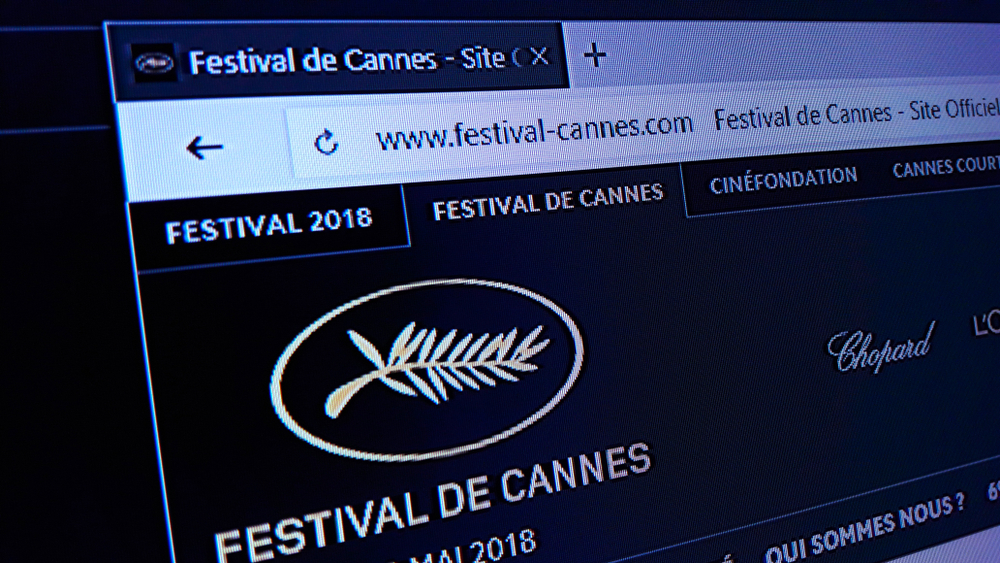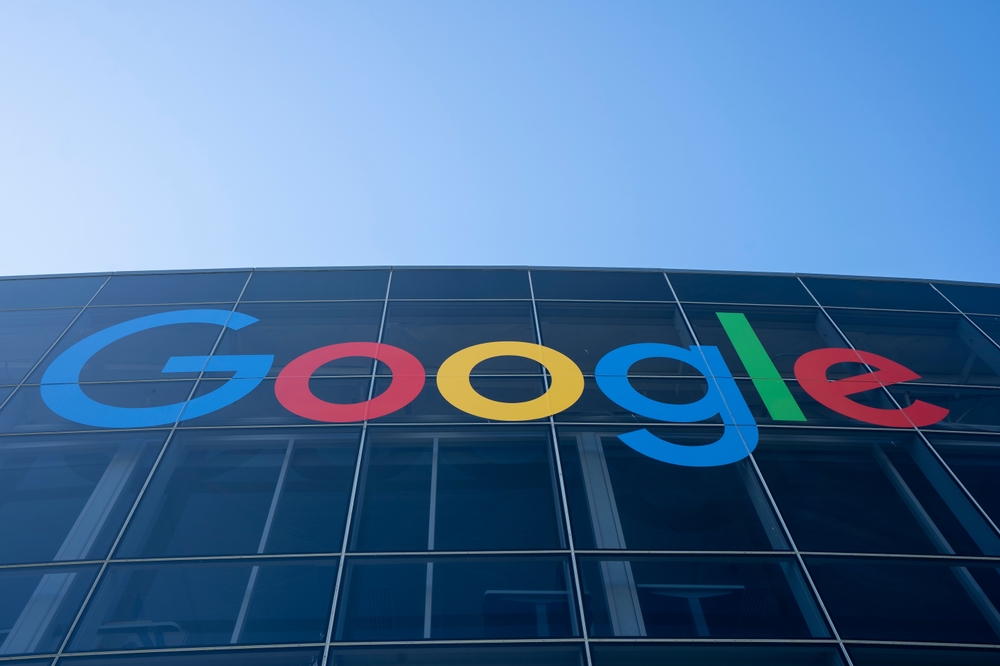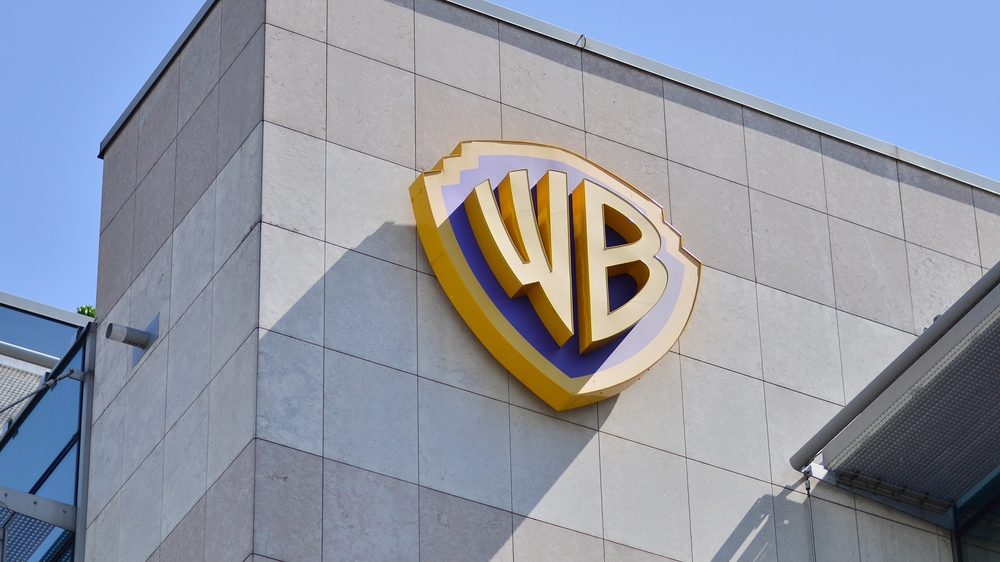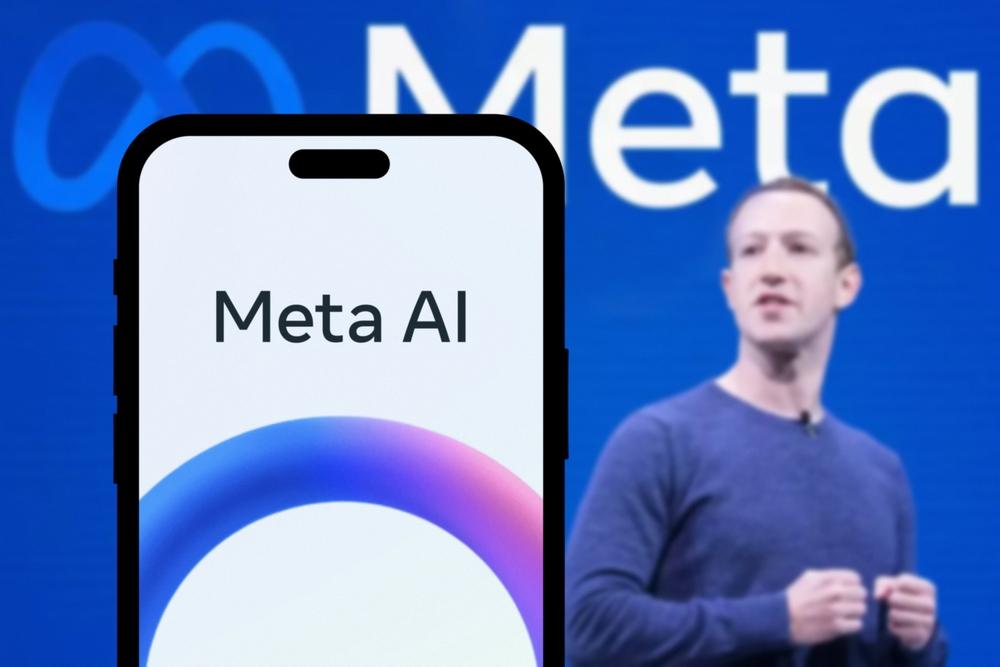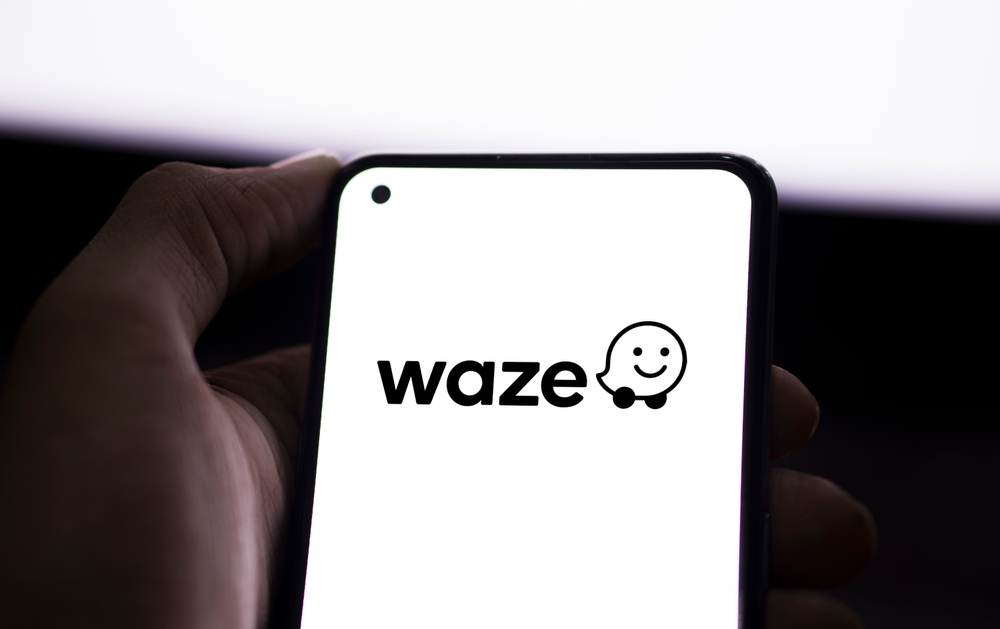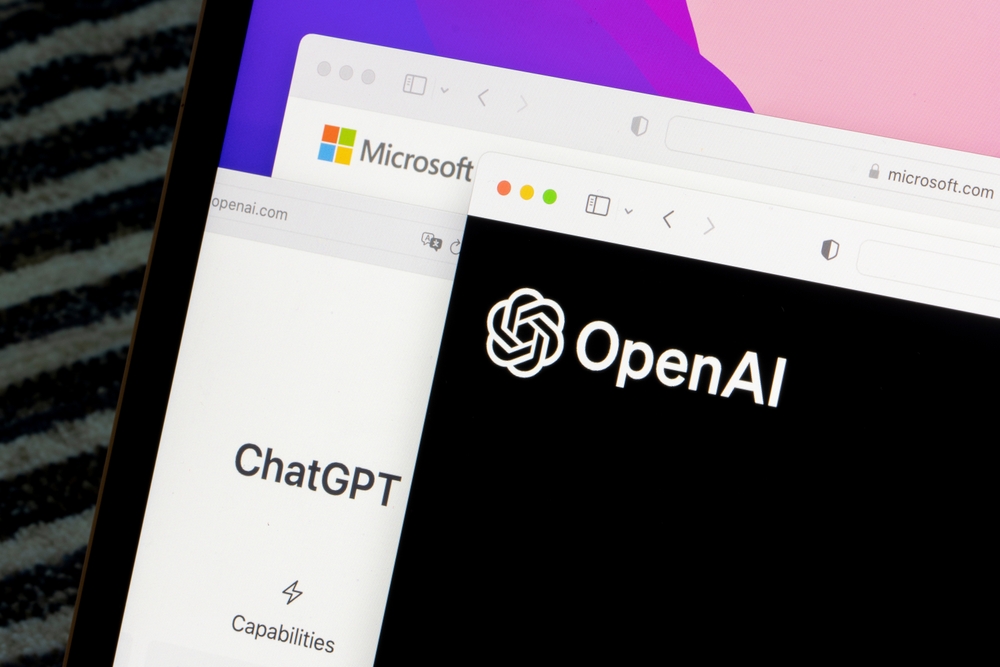Cannes Lions Spotlight: Meta Introduces AI-Enhanced Messenger and New Threads API for Businesses
Meta continues its AI push, unveiling innovative tools at the Cannes Lions International Festival of Creativity, including an AI-driven Messenger chatbot and a Threads platform API. These announcements are part of Meta’s ongoing efforts to enhance business messaging solutions and improve advertiser engagement through artificial intelligence.
The AI-powered Messenger chatbot, one of the highlights of Meta’s presentation, leverages the Llama 3 AI interface to deliver more natural and engaging responses to customer inquiries. This tool aims to improve customer interactions by moving beyond canned responses, allowing businesses to better manage their communication flow with consumers. Meta’s goal is to streamline customer service while keeping the human element accessible. Customers will always have the option to request assistance from a live agent, and businesses can jump into the conversation at any time.
In addition to the chatbot, Meta is also introducing new business messaging tools to help advertisers deliver paid marketing messages directly through Messenger. These tools will allow businesses to share product information and promotions via the Meta Business Suite, and consumers can initiate chats through a “click to message” ad or the “Send Message” button on a Facebook page. The new features will soon be available to select advertisers, and Meta plans to expand these capabilities in the coming months.
Meta also emphasized the value of its AI-powered advertising tools. The company reported a return on ad spend (ROAS) of $3.71 for every dollar spent on its platforms. When advertisers used Meta’s Advantage+ Shopping products, the average ROAS increased to $4.52. These numbers demonstrate Meta’s ongoing commitment to helping businesses maximize their marketing investments using AI.
The introduction of the Threads API marks another significant development for Meta’s platform ecosystem. With over 150 million monthly active users, Threads now allows businesses and creators to share content at scale using third-party applications. The API will enable users to authenticate, publish posts, and interact with their audience more efficiently. In addition, it will offer tools to monitor post engagement, set reply controls, and analyze key metrics like views, likes, and replies.
The Threads API is designed to give creators and businesses more control over their content strategy, allowing them to streamline their operations across multiple platforms. This API is expected to help brands and influencers maintain a stronger connection with their communities while leveraging advanced analytics to inform their content decisions.
These announcements signal Meta’s increasing focus on AI-driven solutions that enhance both customer service and advertising efficiency. As the company continues to develop its tools, brands and businesses will have more opportunities to engage consumers across Meta’s platforms in innovative ways.
For more details on Meta’s latest advancements, visit the full report on Marketing Dive.
Justice Department Mulls Breaking Up Google After Landmark Antitrust Ruling
The U.S. Justice Department is exploring the possibility of breaking up Alphabet Inc.’s Google after a landmark court ruling declared the company’s dominance in the online search market to be illegal. This would be Washington’s most significant move to dismantle a tech giant for monopolistic practices since the failed attempt to break up Microsoft Corp. two decades ago.
Breakup or Alternative Remedies?
Sources familiar with the deliberations reveal that a full breakup of Google is on the table, with potential divestments including its Android operating system and the Chrome web browser. Less drastic remedies under consideration involve enforcing data-sharing requirements with competitors or implementing measures to curb Google’s advantages in artificial intelligence (AI) development.
Market Impact and Legal Developments
Following the court’s ruling on August 5, Alphabet’s stock plummeted by 3.8% in early trading, reflecting investor concerns. Judge Amit Mehta’s decision found that Google’s monopolistic practices extended to both its search engine and search text ads, putting significant pressure on the company to address these issues.
Government’s Strategy and Potential Breakup
The Justice Department’s plan, if enacted, would require judicial approval from Mehta, who would oversee compliance. A breakup of Google would be the most significant such action since AT&T’s dismantling in the 1980s. The government’s proposals could also include prohibiting exclusive contracts that prevent competition, a central issue in the antitrust case.
Focus on AI and Data Access
The Justice Department has expressed concerns that Google’s search dominance provides it with undue advantages in developing AI technologies. Remedies could involve preventing Google from using website content for AI products without consent or enforcing data-sharing obligations with rivals like Microsoft’s Bing or DuckDuckGo.
For further details on this evolving case, read the full article.
Elon Musk’s Neuralink Achieves Milestone with Second Brain Chip Implantation
Elon Musk’s neurotechnology company, Neuralink, has successfully implanted a brain chip in a second patient with a spinal cord injury, advancing its goal of enabling paralyzed individuals to control digital devices using only their thoughts. The latest announcement came from Musk himself, with confirmation via Reuters on August 4, 2024.
The implanted device, designed to help people with severe mobility limitations regain some level of digital autonomy, has been hailed as a groundbreaking innovation. According to Neuralink, the chip contains 400 electrodes, though the company’s website reports that a more advanced version can accommodate up to 1,024 electrodes.
The Neurochip: How It Works
The implanted chip functions as a capsule receiver, affixed behind the ear in a manner similar to a hearing aid. From this capsule, thread-like electrodes extend directly into the brain. These electrodes are extremely thin, up to four times finer than a human hair. In total, the device can implant as many as 1,500 electrodes, all connected to a 4×4 mm processor. This processor interprets and transmits neural signals, allowing the user to control external devices with thought alone.
A Second Attempt at Success
The first successful implant occurred in January 2024, in a patient who had been paralyzed from the neck down due to a diving accident. The initial success was remarkable—allowing the patient to play video games, surf the Internet, and even post on social media using nothing but his thoughts. However, technical issues surfaced a month later when several of the thread-like electrodes shifted out of place, leading to signal disruptions.
In response, Neuralink adjusted its strategy and announced plans to implant the chip deeper into the brain’s motor cortex in the second patient. This new implantation is part of a broader effort to refine the technology and prevent further complications.
Looking Ahead
Neuralink has ambitious plans for the future. By the end of 2024, the company aims to have implanted chips in at least 10 volunteers. Furthermore, Neuralink is preparing to apply for trials in Canada and the United Kingdom to broaden its scope and assess the technology’s global potential.
For more information, you can read the full story here.
This marks a pivotal moment in medical technology, where thought-controlled interfaces are moving closer to reality for patients suffering from debilitating injuries.
Warner Bros Discovery Avoids Break-up with Strategic Asset Sales
Warner Bros Discovery’s (WBD) top management is steering the company away from a potential break-up, a move designed to tackle the severe drop in its stock price since its inception in 2022. CEO David Zaslav and CFO Gunnar Wiedenfels have been reviewing various options to halt the stock’s decline, which has plummeted nearly 70% since the merger that formed WBD.
Insiders reveal that while a break-up was initially appealing, the management concluded that separating the company’s television channels from its streaming and studio businesses posed significant challenges. “On paper, a split seemed logical, but the operational complexities, particularly in negotiating sports rights and deciding content placement, make it a daunting task,” said an informed source.
Breaking up the Hollywood powerhouse could ignite legal disputes with debt investors and complicate content distribution across platforms, caution those close to the discussions. A company spokesperson refrained from commenting on the matter.
Instead of a drastic split, Zaslav and Wiedenfels are exploring the sale of smaller assets. These include potentially offloading the Polish broadcaster TVN or a stake in Warner’s video game division, known for its Harry Potter games. This strategy is aimed at reassuring investors of the company’s valuation, which management believes should be around $60 billion or $25 per share, a stark contrast to the $7.88 closing price on Monday.
The formation of WBD in April 2022, a merger between Discovery and WarnerMedia, was meant to enhance competitiveness against streaming giants like Netflix and Disney. However, convincing Wall Street of its potential has been an uphill battle, with its valuation slashed and management pressured into action. The company is slated to announce its quarterly earnings on Wednesday.
In response to these pressures, WBD has undertaken cost-cutting measures, including layoffs and asset sales like All3Media, the British production house behind “Fleabag”. CNN, WBD’s news division, recently laid off around 100 employees as part of its digital restructuring. Yet, selling CNN faces high hurdles due to its strategic value and the tax implications involved.
“Zaslav views CNN as a critical and reputational asset, integral to our affiliate relations,” an insider stated, referring to the fees cable operators pay to networks. They added that any offer for CNN would have to be exceptionally compelling to justify a sale.
Overall, those within the company assert that WBD’s true value should be much higher. However, the current market conditions are challenging, and success hinges on numerous factors aligning favorably.
For the full story, read more here.
PlayStation 5 Achieves 61 Million Units Sold Amid Falling Hardware Sales
Sony has announced that it has sold over 61 million PlayStation 5 (PS5) consoles, even as hardware sales have seen a notable decline. The company reported a 32% drop in hardware unit sales year-on-year, with 2.4 million PS5 consoles sold in the most recent quarter, down from 3.3 million in the same quarter of 2023, and a substantial decrease from 4.5 million units in the previous quarter.
Despite the decline in hardware sales, Sony’s game revenue saw a 12% increase year-on-year, contributing to a 33% increase in profit. This growth in revenue can be credited to an 18% increase in software sales and a 25% rise in Network Services revenue, largely driven by PlayStation Plus (PS Plus). While Sony hasn’t disclosed the exact number of PS Plus subscribers, it did reveal that the PlayStation Network now has 116 million monthly active users, up from 108 million year-on-year but a slight decrease from 118 million in the last quarter.
Software unit sales have dropped by 5% year-on-year, suggesting that the revenue increase is possibly due to higher game prices. In the recent quarter, the PS5-exclusive Stellar Blade sold a million copies by the end of June. Other significant releases include the PC version of Ghost of Tsushima: Director’s Cut and the Destiny 2 expansion, The Final Shape.
For context, Nintendo sold 2.1 million Switch consoles in the same period, indicating that while the PS5 sales lead, the Switch remains competitive in its seventh year of release. Microsoft also experienced a 42% drop in hardware sales in the previous quarter, reflecting an industry-wide decline in hardware sales.
Read more at the original source here.
Recession Fears Trigger Massive Selloff Across Global Markets
The global financial markets took a massive hit on Monday, as over $1.93 trillion was wiped out from the U.S. stock market alone. The selloff was triggered by growing fears of an impending recession, following last week’s dismal economic data from the United States.
At 11:30 a.m. ET, the Dow Jones Industrial Average plunged 863.70 points, or 2.17%, to 38,873.56. The S&P 500 and Nasdaq Composite also faced significant declines, dropping 2.42% and 2.77%, respectively. Earlier in the day, the Nasdaq had dropped over 1,000 points, leading the rout as tech stocks bore the brunt of the selloff.
Weak jobs data released on Friday exacerbated recession fears. The U.S. economy added just 114,000 jobs in July, falling short of expectations, while the unemployment rate edged up to 4.3%. This news, combined with a dismal global economic outlook, sparked panic among investors, leading to a sharp selloff across global markets.
In Asia, Japan’s Nikkei 225 plunged 12.4%, marking its worst single-day loss since the Black Monday crash of 1987. South Korea’s Kospi index fell by 8.8%, while European markets sank roughly 3%. The ripple effects were felt across various asset classes, with Bitcoin dropping 12% and smaller U.S. companies represented by the Russell 2000 index losing 5.5%.
Big Tech stocks were particularly hard hit. Shares of Alphabet, Netflix, and Meta fell between 2.5% and 4.0%. Nvidia, the AI chip giant, saw its stock plunge over 8% following reports of a delay in launching its upcoming artificial-intelligence chips due to design flaws. Even Apple couldn’t escape the carnage, with its stock declining by 4.6% after Berkshire Hathaway reduced its stake in the company.
The bond market also reacted sharply, with Treasury yields falling as investors sought safe-haven assets. The yield on the 2-year Treasury note dropped to 3.81% from 3.88% late Friday. Meanwhile, commodities like gold and silver weren’t spared either. Gold prices fell over 2%, and silver plunged by 5% as investors liquidated their positions in response to the market turmoil.
For more details on the market’s dramatic downturn, visit the original source here.
Meta’s Star-Studded AI: Awkwafina and Judi Dench Among Celebs Tapped for New Digital Assistants
Meta is making a splash in the AI world by courting top celebrities like Judi Dench, Keegan-Michael Key, and Awkwafina to lend their voices to its upcoming digital assistants. According to Bloomberg, the tech giant is working swiftly to finalize agreements so that these high-profile voices can be showcased at the Meta Connect conference in September.
The primary focus is a digital assistant product named MetaAI, which aims to bring a touch of star power to AI interactions. Meta is reportedly negotiating with leading talent agencies in Hollywood, offering potentially multi-million dollar deals to secure these voices. This move follows a similar strategy from last year’s Connect, where Meta invested heavily in celebrity AI chatbots before discontinuing them.
The contracts with these celebrities are expected to be temporary, allowing actors the option to renew their involvement once the initial term expires. The voices are set to be integrated across Meta’s platforms, including Facebook, Instagram, and Meta’s Ray-Ban smart glasses. Meta has yet to comment on the details of these negotiations.
This approach recalls previous efforts to integrate celebrity voices into technology, such as Waze’s voice directions or the now-discontinued Meta AI chatbots. However, with advancements in generative AI, the new MetaAI could offer a more realistic and engaging experience. For instance, OpenAI’s recent demonstration featured an AI voice eerily similar to Scarlett Johansson, highlighting the potential for a more authentic interaction with voices like Awkwafina’s.
As Meta gears up for its big reveal, the integration of renowned voices could redefine how users interact with AI, making these digital assistants feel less like gimmicks and more like engaging, personable tools.
For more details on Meta’s latest initiative, visit The Verge.
New Google Maps Update Adds Building Entrance and Parking Guidance
Google is pushing the envelope on navigation technology by enhancing its two flagship apps, Google Maps and Waze, with a series of updates aimed at improving user experience. These updates not only bring the apps closer in functionality but also retain their distinct identities, catering to their dedicated user bases.
Google Maps: Enhanced Incident Reporting and Destination Guidance
One of the most significant updates to Google Maps is the introduction of enhanced incident reporting. Previously, incident reporting was a feature that distinguished Waze from other navigation apps. Now, Google Maps is incorporating this Waze-like functionality, allowing users to report and view incidents such as road closures, construction, speed cameras, and police presence with larger, more visible icons. These reports can be confirmed by other drivers with just a tap, creating a more interactive and up-to-date navigation experience.
Additionally, Google Maps is adding a feature that significantly improves destination guidance. As users approach their destination, the app will now identify the exact building entrance and highlight it in red, with a green indicator pointing to the main entrance. This feature is particularly useful in urban environments where locating the correct entrance can be challenging. Along with this, Google Maps will also show nearby parking lots, making it easier for users to find parking as they arrive at their destination.
These updates are rolling out to Google Maps on various platforms, including Android, iOS, cars with Google built-in, and Android Auto and Apple CarPlay. The destination guidance feature is expected to be available to users in the coming weeks, providing a more seamless navigation experience.
Waze: New Camera Alerts and Event Notifications
While Google Maps is integrating some of Waze’s most popular features, Waze is also receiving updates that keep it ahead of the curve in traffic navigation. Waze users can now report and receive alerts for new types of traffic cameras, such as those monitoring bus lanes, HOV lanes, seat belt use, and even texting while driving. These alerts are crucial for drivers who want to avoid fines and stay safe on the road.
Waze is also introducing a new feature that provides notifications for events that may impact traffic. Whether it’s a marathon, concert, or sports event, Waze will alert users to road closures and traffic disruptions related to these events. This feature is particularly beneficial for those who frequently drive in areas where such events are common. The event notification feature is launching in time for the 2024 Olympic Games and will be expanded to cover future events.
Conclusion: A Balanced Approach to Navigation
While these updates bring Google Maps and Waze closer together in terms of functionality, they also highlight the unique strengths of each app. Google Maps continues to focus on providing a comprehensive navigation experience with detailed destination guidance and real-time incident reporting. In contrast, Waze remains the go-to app for drivers who prioritize real-time traffic alerts and community-driven updates.
As Google continues to innovate and refine its navigation offerings, users can expect both apps to remain essential tools for navigating the complexities of modern travel. For more information on these updates, visit The Verge.
Spotify Drops Lyrics Cap, Free Users Now Enjoy Unlimited Access
Spotify has officially lifted the restriction on viewing lyrics for free users, allowing them to enjoy unlimited access to lyrics across all songs on the platform. This move comes after the company had implemented a cap in May, limiting free users to viewing lyrics for only three songs per month. The restriction, which was initially introduced as part of a wider test, was met with widespread criticism from the user base.
In response to the backlash, Spotify has decided to remove the cap, making lyrics accessible to all users, regardless of their subscription status. The company announced that it would be expanding the availability of lyrics for free users globally in the coming weeks. A Spotify spokesperson highlighted the company’s commitment to constantly testing and iterating its features across different tiers, markets, and devices.
The initial decision to limit lyrics access was speculated to be a strategy to encourage users to upgrade to Spotify’s paid subscription tiers, which start at $11 per month. However, during Spotify’s most recent earnings call, CEO Daniel Ek acknowledged the need to enhance the free user experience. “We are prioritizing enhancements in our free product pipeline based on existing performance in certain markets,” Ek stated. He also hinted at additional improvements to the free tier that will be rolled out in the coming months.
For more details, you can read the full article on Engadget.
OpenAI Challenges Google’s Dominance with New AI-Powered Search Engine Prototype
OpenAI announced it is testing a new prototype called “SearchGPT,” aimed at combining its advanced AI models with real-time web information to deliver quick and relevant search query responses. This move is a direct challenge to Google’s market-leading search engine.
In a blog post, OpenAI revealed that SearchGPT is currently available to a select group of users and publishers for feedback. The insights gained from this testing phase will help refine the features before they are integrated into ChatGPT in the future.
SearchGPT allows users to interact through conversational queries, similar to speaking with a person, and includes the ability to ask follow-up questions. This conversational approach is designed to make the search experience more intuitive and user-friendly.
Recently, Google introduced AI-generated query result summaries, termed “Overviews,” which are displayed at the top of search results pages. These summaries aim to provide direct answers to user queries, raising concerns about reduced opportunities for traditional ad placements.
OpenAI’s SearchGPT appears to mirror Google’s Overviews in function. However, the company emphasizes that it is working closely with publishers to ensure that the new technology respects and protects journalistic content.
“AI search is going to become one of the key ways that people navigate the internet,” said Nicholas Thompson, CEO of The Atlantic, in OpenAI’s blog post. “It’s crucial that this technology is built to value, respect, and protect journalism and publishers.”
Since ChatGPT’s release in late 2022, there has been intense competition in the AI sector to develop generative AI tools capable of creating text, images, and other content from simple prompts.
“We are innovating at every layer of the AI stack,” Google CEO Sundar Pichai stated during a recent earnings call for Alphabet.
OpenAI has invited interested users to join a waitlist to try SearchGPT, signaling its commitment to expanding the reach and functionality of AI-powered search.
